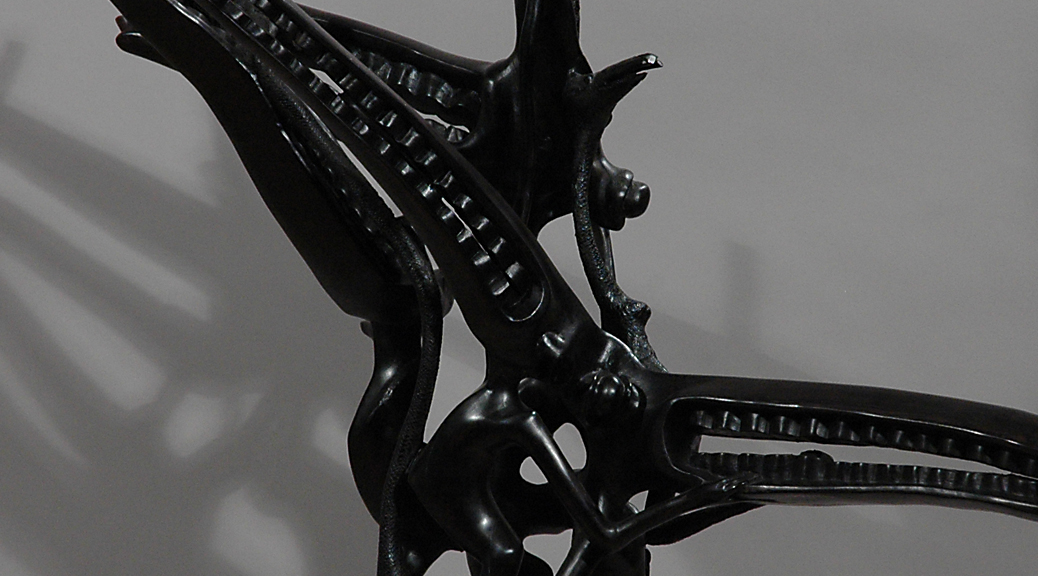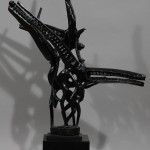| CRK 0302-1
Makonde Shetani figure “Good Spirit” – Kashimiri Matayo. This “Shetani” sculpture is a spirit that lives in mangroves of Mozambique and Southern part of Tanzania among the Makonde people. These fascinating figures, whose character seems to change completely depending on which angle you observe it from. The artist uses spaces in the wood in order to create this figure which is cut out of the root of “mpingo” wood (ebony) in one piece of wood. The artist Kashimiri Matayo, born in Mozambique in 1944 and is recognized as one of the greats of modern Makonde carvers. An important collection of Kashimiri Matayo Shetani figure among others, is to find at the Moesgaard Museum in Aarhus, Denmark. The Makonde people of Mozambique living south of the Rovumba River and those living north, in Tanzania, occupy the high plateaus. They lived in isolated, sparsely populated hinterland, often purposely to avoid slave traders, but nonetheless lost untold thousands to the 18th and 19th century slave trade. Measure: H: 82, W: 72, D: 36 cm. – Weight: 8.300 Kilos Provenance: Kapt. Felix Lorenz, Dar-es-Salaam (Lauenburg, Germany) since 1961.
Literature: Zachary Kingdon; ”A Host of Devils: The History and Context of the Making of Makonde Spirit Sculpture” September 2002. Publisher: Routledge – ISBN: 0-415-27727-2 |
The Makonde people are a small ethnic group of barely 1.5 million people, who live in Tanzania and Mosambique. They got famous for they art in the beginning of the 20th century. In the inter-war period many Makonde families moved to the area around Dar-es-Salaam to work in sisal plantations and they brought with them a unique artform, which is today acknowledged worldwide.
Makondeart is characterised by a unique sculptural expression with a surrealistic touch, appealing to a wild imagination. The sculptures depict little capricious and some times cruel demons called Shetani, who also appear in the shape of benevolent angels according to an ancient myth. Every figure is constructed of abstract forms, which seem to be budding into beautiful patterns. In several of the sculptures you see humanlike fragments and fabulous creatures.
Request price for Kashimiri Matayo




